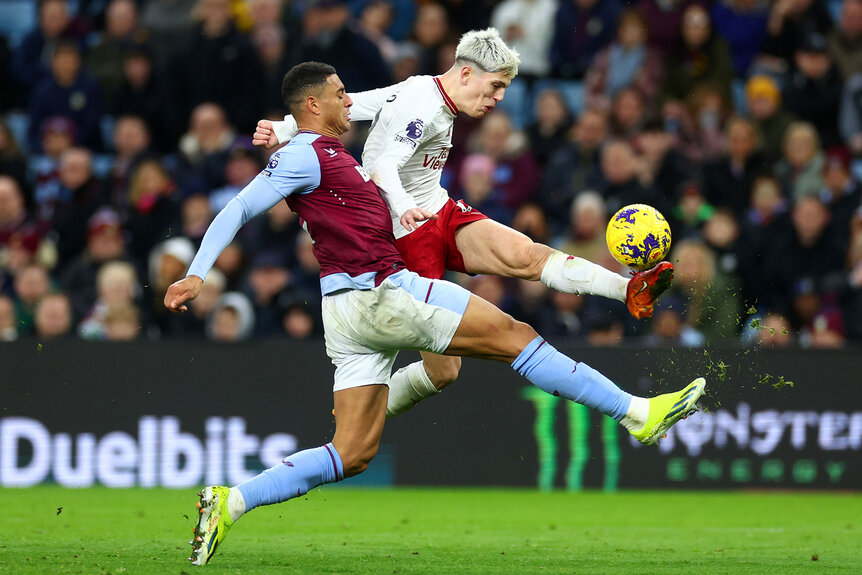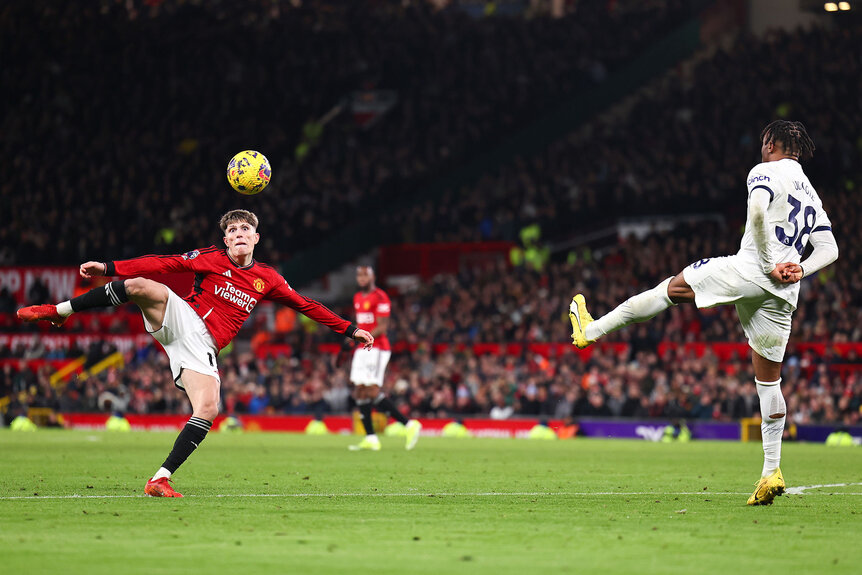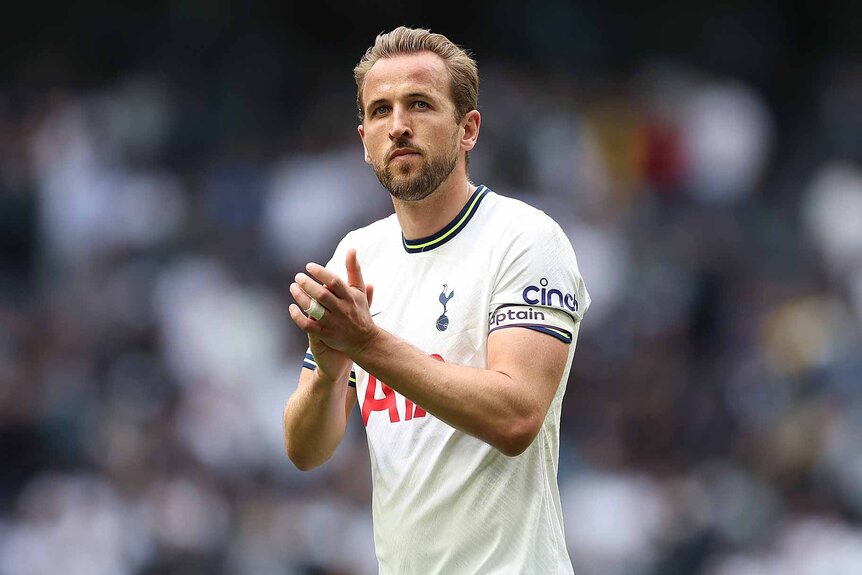How Do the English Premier League’s Loan Rules Work?
Loan deals are becoming increasingly common in the EPL as teams search for alternative avenues to bolster their squads other than splashy spending sprees.

The elite clubs atop the English Premier League table have traditionally relied on their deep-pocketed owners to snatch up marquis players during chaotic transfer windows (as Chelsea’s spirited patron of the pitch Todd Boehly discovered firsthand in 2023), but just because you have the means to shell out beaucoup bucks, success in England’s top flight for footy is anything but guaranteed.
Despite spending a mind-boggling £600 million on signings in less than year, the power of the purse for Boehly and the other brass at Stamford is only just now providing the club a lifeline out of its cycle of mediocrity. This year, in attempt to get out of Liverpool’s wake and catch up to the Reds, per ESPN, Manchester City doled out £180 million, which was nearly as much as the remaining 19 teams in the league. In the Premier League, where managers’ heads roll more than an episode of Game of Thrones, even a Treble-winning coach like the Citizens’ Pep Guardiola knows that his shelf life has an expiration date, should his production falter to more mortal levels. When excellence is the only acceptable standard, one can muster a sanguine image in the face of public scrutiny, but the truth of the matter is no one is safe. No one.
Still, the question remains, how do clubs that trend toward the bottom of the league or those with less flush, spend-first owners construct viable teams that can perennially go toe-to-toe with the juggernauts of the league like Man City, Liverpool, Arsenal, and others? Besides cementing and curating deeply entrenched development routes that rely on the nuanced success of scouting, a skill of paramount importance that cannot be overstated, the answer sometimes lies in the realm of player loans. Here’s a look at everything you need to know about player loans in the English Premier League.
What is a player loan in the English Premier League?
A player loan deal in England’s top flight, to put it simply, is when a club in the Premier League acquires a player on a short-term transfer. The devil’s in the details when it comes to how much time a player on loan will spend at any given club, but it could range from just a few weeks to an entire season-long campaign.
The idea behind the loan can be two-fold: (1) to fit a square peg in a square hole, generating near instantaneous impact in the here and now, or (2) cultivating the skills of younger talent by sending them to play and gain experience in the lower tiers. While the Premier League is vastly approaching the status of a “make or miss” league like the NBA, Premier League player loans are often executed on behalf of what’s generally best for player and club and not out of spite or retribution.
What are the Premier League’s rules for player loans?
As outlined in the Premier League Handbook 2024-2025 on the league’s official website, there are restrictions in place to guide clubs on how to execute loans from Premier League or other English teams. These rules are as follows:
- Premier League clubs may not register more than two players on loan at any one time.
- The maximum number of loans registrable in the same season is four and, under no circumstances, shall more than one be from the same club at any one time.
- Premier League clubs cannot loan to another Premier League club a player they have acquired in the same transfer window.
- A Premier League club may loan not more than one of its goalkeepers to another Premier League club.
With the exception of Welsh clubs competing in the competitions listed under Rule V.6.2, loans from a club in membership of another National Association do not count towards the above quotas.
What role does FIFA play in Premier League loans?
Like all leagues, change is inevitable, and the Premier League is no different. The above rules were first introduced ahead of the 2019-2020 season but, thanks to FIFA’s involvement, quota numbers have shifted in recent seasons. It was announced in 2022 that by the summer of 2024, the total allotted number of athletes loaned in and out from a specific club would be slashed from eight players to six. On the way to meet those numbers, the 2023-2024 season permitted any one specific club to take in seven players on loan and ship out seven players on loans.
That said, these stipulations aren’t applicable to “homegrown” athletes who are players that have remained at their current club or another in the same country for at least three years between the ages of 15-21.
Many in the footy fiefdom understand that FIFA takes player loans very seriously in light of a myriad of fraud allegations and financial misconduct in recent years, where teams like Everton and Man City came under scrutiny for impropriety of the purse, or what’s specifically deemed a breach of the league’s Profitability and Sustainability Rules (PSR). These rules are designed to not only enhance transparency and preserve the sanctity of England’s top flight, but to also crystalize the importance of fair play in a league that has become more and more influenced by wealthy individuals outside of the United Kingdom who own stakes of other teams not in the Premier League. As reported by The Guardian, other deleterious issues in which FIFA is closely watching have occurred from inflating and deflating a player’s value as well as “eye-catching” last minute transfers by teams who were already under scrutiny – Aston Villa, Chelsea, Leicester City, Newcastle, Everton, and Nottingham Forest.
What have been some notable player loans in the Premier League?
Before he was England’s talisman, Tottenham’s legendary goal scorer and homegrown hero Harry Kane, who is now carving up the Bundesliga for Bayern Munich, was a bona fide “loan star,” shipping out first to Leyton Orient, then Millwall, then Norwich City, and finally Leicester City, before securing himself a spot on the Spurs from 2013-2023. Joe Willock might go down as one of Newcastle’s best loans ever, like Martin Odegaard for Arsenal, while Jurgen Klinsmann deserves that honor for Tottenham, and Javier Mascherano might own that spot for Liverpool. A list of other top loan transfers was compiled last year by Give Me Sport.
But life’s not always that rosy out on loan. Chelsea’s Joao Felix spent a short spell at Stamford Bridge on loan from Atlético Madrid, then went on loan to Barcelona before returning to the Blues’ tumultuous gates. The 25-year-old’s tenure in Premier League soured again as he went to AC Milan on loan. Now, it’s believed he could soon be on the move back to his boyhood club, Benfica.
Despite what seems like an aggravating carousel to be on, as a player, some might argue that the athlete on loan is in the driver’s seat and has the ability to make the most of his situation, like Kane did, and now Àlex Moreno is doing for Nottingham Forest after leaving on loan from Aston Villa. Another notable player to find success on the pitch via loans includes former Arsenal striker Eddie Nketiah, who joined Leeds United in the Championship on a season-long loan in 2019. In 2024, it was reported by The Short Fuse that Nketiah might again be on the move via a loan to Marseille as well as Nottingham Forest, but contractual setbacks with the Gunners prevented the young talent from jettisoning from Emirates Stadium. After much subdued success, the dynamic striker is finally showing more than just flashes of promise for Crystal Palace, who signed him to a 5-year deal worth upwards of £30 million in 2024.
All in all, it’s fair to say that the success of loans can often vacillate immensely from club to club. In the end, when “ball is life,” it’s different strokes for different folks, but it’s ultimately up to the player to make the best of his situation, no matter the jersey on his back.
Watch the English Premier League on USA Network all season long!















